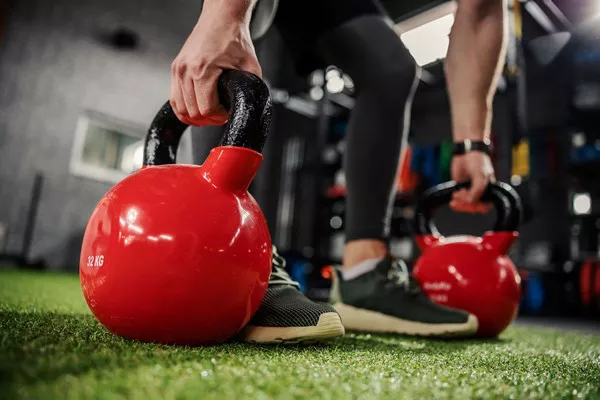Fitness enthusiasts often encounter a variety of training methods, each promising different benefits and outcomes. Among the most popular and frequently debated are strength training and hypertrophy training. While both training modalities aim to enhance physical fitness and improve muscular capabilities, their core objectives and methodologies differ significantly. This comprehensive article explores the nuances between strength training and hypertrophy training, helping individuals tailor their workout regimen to better suit their personal fitness goals.
Understanding the Basics
Before delving into the specific differences between strength training and hypertrophy training, it’s essential to define what each entails.
Strength Training: The Foundation of Muscular Power
Strength training, often associated with lifting heavy weights for fewer repetitions, focuses primarily on increasing the maximum force that a muscle or muscle group can exert in a single effort. The primary goal here is to enhance functional strength, which is crucial for daily activities, sports performance, and overall health.
Hypertrophy Training: Maximizing Muscle Size
In contrast, hypertrophy training targets the increase in muscle size. This method involves performing a higher volume of repetitions with a moderate amount of weight, specifically designed to cause micro-tears in the muscle fibers, which then repair and grow larger. The focus is on aesthetic improvements and muscle balance rather than purely increasing strength.
Goals and Outcomes
The intended outcomes of strength and hypertrophy training are distinct, each catering to different fitness goals.
Goal Orientation in Strength Training
Strength training is often the preferred method for athletes who require strong, explosive power in their sport, such as weightlifters, sprinters, and football players. The training is designed to improve the efficiency and capacity of the nervous system to generate quick, powerful movements involving large amounts of force.
Goal Orientation in Hypertrophy Training
Conversely, hypertrophy training is typically favored by bodybuilders and those looking to enhance their physique. This method focuses on increasing the volume of muscle fibers, leading to visibly larger muscles. It’s not solely about strength but about achieving a balanced and proportioned body that showcases muscularity.
Physiological Differences
The physiological adaptations in the body also vary between these two forms of training.
Neurological and Muscular Adaptations in Strength Training
Strength training induces neurological adaptations which allow muscles to contract more efficiently and forcefully. This involves changes in motor neuron capabilities, recruitment of muscle fibers, and synchronization of muscle actions, which all contribute to greater muscular power without a proportional increase in muscle size.
Cellular and Metabolic Changes in Hypertrophy Training
Hypertrophy training, on the other hand, stimulates growth through metabolic fatigue and muscle damage. This process involves the expansion of muscle fiber cross-sectional area, increased glycogen storage, and enhanced protein synthesis within the muscle cells. These adaptations lead primarily to larger muscles but not necessarily to a corresponding increase in maximum strength.
Training Techniques and Modalities
The techniques and approaches used in strength and hypertrophy training also differ significantly, influenced by the underlying principles of each training type.
Load and Repetition in Strength Training
Strength training typically involves lifting heavier weights at lower repetitions – usually under six reps per set – with longer rest periods to allow for full recovery of the neuromuscular system. This approach maximizes the ability to lift more weight over time.
Volume and Repetition in Hypertrophy Training
Hypertrophy training involves moderate weights at higher repetitions – generally between eight to twelve reps per set – with shorter rest periods. This approach is intended to maintain a high level of metabolic stress on the muscles, encouraging growth.
Periodization and Progression
Both training styles utilize periodization and progression techniques to continue challenging the body and to avoid plateaus in improvement.
Progressive Overload in Strength Training
In strength training, progressive overload can be achieved by increasing the weights lifted or by varying the training regimen to continuously challenge the muscles. This might include integrating different forms of resistance, such as bands or chains, or changing the exercise patterns.
Progressive Techniques in Hypertrophy Training
Hypertrophy training often uses techniques like drop sets, supersets, and pyramid sets to increase intensity. The progression here is more about increasing the time muscles spend under tension and the total volume lifted rather than dramatically increasing the weight.
Nutritional Considerations
Nutrition plays a crucial role in the effectiveness of both training types, though the focus may vary depending on the goals.
Nutrition for Strength
Strength athletes may focus more on overall caloric intake and timing to ensure that they have sufficient energy for high-intensity workouts and recovery. Macronutrient ratios might lean more heavily towards proteins and fats, which provide the needed energy for short, intense bursts of activity.
Nutrition for Hypertrophy
Those training for hypertrophy might focus on a higher caloric surplus to support muscle growth, with a significant emphasis on protein to facilitate muscle repair and growth. Carbohydrate intake is also critical to sustain longer training sessions typical of hypertrophy routines.
Psychological and Motivational Aspects
The mental and motivational aspects of training also differ between strength and hypertrophy orientations.
Mental Focus in Strength Training
Strength training demands a high level of concentration and mental fortitude, particularly when lifting near-maximal loads. The psychological preparation for lifting heavy weights involves significant mental resilience and focus.
Aesthetic Motivation in Hypertrophy Training
Hypertrophy training, being closely aligned with aesthetic goals, often requires a different type of motivation, focusing more on body image and the visible results of training efforts. This can be both motivating and demanding, as the pursuit of ideal body proportions can be a lengthy and challenging process.
Conclusion
Understanding the distinctions between strength training and hypertrophy training is crucial for anyone looking to optimize their fitness regimen. By aligning one’s training approach with specific goals—whether to increase strength for functional purposes or to enhance muscle size for aesthetic reasons—individuals can more effectively tailor their workout plans and nutritional strategies. Both forms of training offer unique benefits and can be adjusted based on personal fitness goals, preferences, and lifestyle considerations. The choice between strength and hypertrophy training should therefore reflect one’s ultimate fitness aspirations, allowing for a more focused, effective, and fulfilling exercise experience.
[inline_related_posts title=”You Might Be Interested In” title_align=”left” style=”list” number=”6″ align=”none” ids=”8414,8411,8405″ by=”categories” orderby=”rand” order=”DESC” hide_thumb=”no” thumb_right=”no” views=”no” date=”yes” grid_columns=”2″ post_type=”” tax=””]































